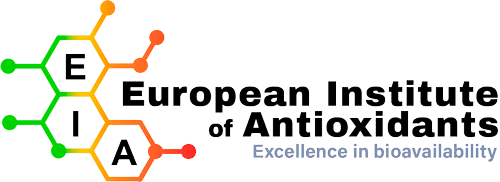
The IEA laboratory masters all scientific methods to measuring (in vivo and in vitro) the antioxidant potential for a plant, animal, human being or a manufactured product intended for food or for application on the body.
We can help manufacturers to determine the antioxidant profile of a preparation, characterize new antioxidant molecules for potential applications, and identify molecules specifically suited to a product formulation.
The IEA is at your disposal for all your requests:
- Evaluation of the antioxidant power of your formulas
- Assay, characterization and identification of your molecules
- Formulation and optimization of antioxidants for your products
- Argumentation on the antioxidant content for the launch of a new product
- Study of the bioavailability of your active molecules
In addition to studies on the bioavailability of antioxidants, the IEA is able to drive studies at the clinical, physico-chemical and cellular level.
Examples of clinical studies
Oxidative stress assessments: blood dosage of antioxidants (vitamins A, C, E, beta – carotene, glutathione, ubiquinone, superoxide dismutase, glutathione peroxidase) and trace elements (selenium, copper, zinc,…), markers of oxidation of lipids (oxidized LDL, antibodies against oxidized LDL, isoprostanes) and of DNA as well as of NO metabolism in humans. Copper, zinc, selenium, vitamins A, E, beta-carotene and gamma analyzes -tocopherol
Determination of inflammation markers (myeoperoxidase, interleukins, adhesion molecules)
Study of the regulation of the expression of genes encoding antioxidant enzymes by polyphenols (Keap1 / Nrf2 / ARE system)
Setting up of clinical studies on healthy and pathological subjects in which oxidative stress is involved (diabetes, renal dialysis, AIDS, cardiovascular pathologies, etc.)
Studies of the effect of antioxidants on sports populations (amateurs and professionals)
Development of food habits questionnaires specifically dedicated to dietary intake of antioxidants
Experimental studies on animals (rat, mouse, rabbit, dogs, horses, etc.) within the framework of an approved animal facility
Use of the in vitro SHIME model (Simulator of Human Intestinal Microbial Ecosystem) which stimulates the digestive mechanisms of the stomach until the end of the colon (bioavailability studies)
Examples of physicochemical studies
In vitro analysis of the total antioxidant capacity of any matrix (classic tests ORAC, TEAC, FRAP, DPPH, electronic paramagnetic resonance).
Use of models more in line with human physiology (lipid peroxidation, xanthine oxidase activity, chemiluminescens in whole blood).
Determination of total polyphenols and their subclasses (phenolic acids, flavonols, flavanones, flavones, flavan-3-ols or cathechins, anthocyanidins and isoflavones) by H-UHPLC and mass spectrometry.
Example of studies at the cellular level
Study of the regulation of endothelial functionality (metabolism of nitrogen monoxide or NO) on cell cultures (in vitro) and on aorta segments isolated from animals (ex – vivo) by polyphenols.
Study of the regulation of endothelial functionality (“flow mediated dilation” or FMD) by polyphenols in humans; models of diet-related endothelial dysfunction (postprandial oxidative stress).
Determination of inflammation markers (myoperoxidase, interleukins, adhesion molecules).
Study of the regulation of the expression of genes encoding antioxidant enzymes by polyphenols (Keap1 / Nrf2 / ARE system).
The IEA is recruiting...
We are constantly looking for new collaborators to participate in the development of the company.
